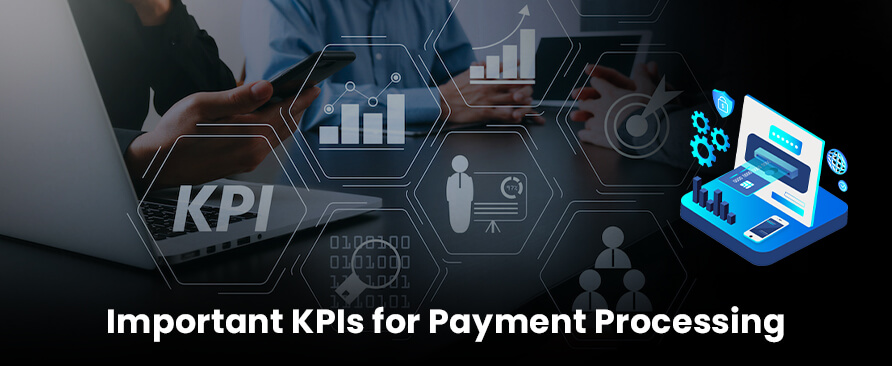Important KPIs for Payment Processing | Binary Gateways
Important KPIs for Payment Processing | Binary Gateways

For business owners, seamless payment processing is more important than anything else. It can be difficult to evaluate your platform’s performance, especially if you don’t know what numbers to track. It is therefore important to identify key performance indicators (KPIs).
Binary Gateways has made it possible for businesses to improve their payment processing. We are experts in what it is essential to track and how to measure this effect.
We’ll be looking at six key KPIs for payment processing,
Conversion Rates
Conversion rates are the most important metrics for payment processing.
This is simply a way to track the number of conversions compared with the number of attempted or potential transactions. It’s a simple percentage. The goal is to get as close as possible to 100%
However, this base-level percentage may not be the most useful.
Further information will be needed about the types of payments made. You should track how successful the payments are based on the payment method (ACH, credit card, etc.). You should also keep track of the inputs to that method (bank, card types, etc.). ).
Click Here To Visit More Blogs
- Bad Credit Merchant Account | Binary Gateways
- Restaurant Merchant Services Provider | Binary Gateways
- Firearm Merchant Account | Binary Gateways
- DIFFERENCE BETWEEN 2D AND 3D PAYMENT GATEWAY
1. Conversion by Payment Method
You should try to accept as many payment options as possible. This is one of the best ways to pay your customers. Offering mobile payment options allows you to capture more revenue.
But, flexibility comes with its own set of challenges.
Accepting multiple forms of payment opens up the possibility for things to go wrong when you accept newer, more complicated, or less common options. These could lower your conversion rate.
To fully understand which payment options work seamlessly, and which ones might be worth troubleshooting or dropping, you need to keep track of the conversion by payment method.
2. Conversion of Specific Inputs
You may need to be more specific in some cases.
You should not only look at how payment methods convert (or fail), but also consider the inputs within each payment method. You can track conversion using:
- Card issuer or type of card being used
- Type of mobile app (Apple/Google Pay).
- Third-party platforms (PayPal etc.
You can also track the interactions between these inputs as well as the places where purchases are made. Apple Pay may work flawlessly on your website but might have issues with in-store POS interactions. This should be flagged!
This is essentially looking at the details of your conversion rates.
![]()
Email us anytime!
Email customer service 24/7 at info@binarygateways.com
![]()
Call us anytime!
Reach customer care 24/7 at (801) 761-5001
3. Payment Platform Uptime
System failures are often the cause of lower conversion rates. This is when your payment infrastructure stops working, hopefully for a brief time.
There are often other options available if this happens in brick-and-mortar stores. Older shops might still have carbon copy printers for key-in delayed credit card entry.
In e-commerce, environment downtime could mean lost purchases. You should monitor your uptime and track the duration of any system failures.
You are not in control of the performance of your chosen payment platform. What is within your control is the platform you choose. You want to ensure that your platform meets the needs of your customers and minimizes downtime.
4. Cart Abandonment Rate
Online shoppers seem to love to add items to their carts and then go on to make purchases. Over the past decade, abandonment rates averaged 70%.
Rest assured, if it’s happening on your e-commerce site! It’s something that almost every retailer has to deal with.
According to Baymard Institute some of the most common reasons for abandonment are:
- Additional fees (48%)
- You will need to create an account (24%)
- Slow delivery of past orders (22%)
- Trust issues and payment information (18%)
- Overly complicated or lengthy checkout (17%)
These issues can be addressed by making costs transparent, allowing purchases without accounts, and providing a seamless and secure purchasing experience.
You should also track the reasons why your customers abandon their carts. This includes identifying trends such as when they abandon or what types of abandoned purchases.
5. Sales Funnel Bounce Rate
Although this category is only tangentially related to payment processing, it’s still worth tracking. This helps you gain insights into which consumers abandon carts.
Many times, the problem may be related to factors that were not taken into consideration when making the purchase decision.
One study found that Google Ads has a 4.4% conversion rate for search networks and 0.57% for display networks. This means that 6 to 44 potential buyers will make a purchase from the search results or network ads. Slim pickings.
As potential customers move down the sales funnel, this number will rise.
The likelihood that a reader will make a purchase increases every time they click on your landing page. You should track their bounces to make sure they don’t happen again.
You can also find out if the problem is related to your payment infrastructure by looking at where potential buyers are bouncing off. It is crucial to rule out other variables!
6. Chargebacks and Refunds
Your chargeback rate is the most serious fraud-like situation that you need to be monitoring across all your payment processing infrastructure. Chargebacks are usually like this:
- A customer’s debit or credit card is used to make a purchase
- The customer contests the purchase with the bank or card issuer
- The card issuer charges the customer and credits the money to the customer
- You have the right to contest the chargeback with the card issuer
Chargeback disputes don’t necessarily involve fraud claims. Customers may also seek a refund for items they bought legally.
You should track and try to decrease your chargebacks in all cases. Why?
One reason your business could end up on Mastercard Alert to Control High-risk Merchants’ (MATCH), is that you have been processing too many chargebacks. The Terminated Merchant File (TMF) is replaced by MATCH, but it functions the same–you want it to stay off.
Final Words
These KPIs will help you get the best out of your payment processing, no matter what type of payment processing it is. These KPIs will be important to track, analyze, and make informed decisions.
Binary Gateways has been helping businesses accept online payments for years. Our partnership gives you unparalleled insight and support for seamless payment processing. Contact us today to find out more about our platform!
